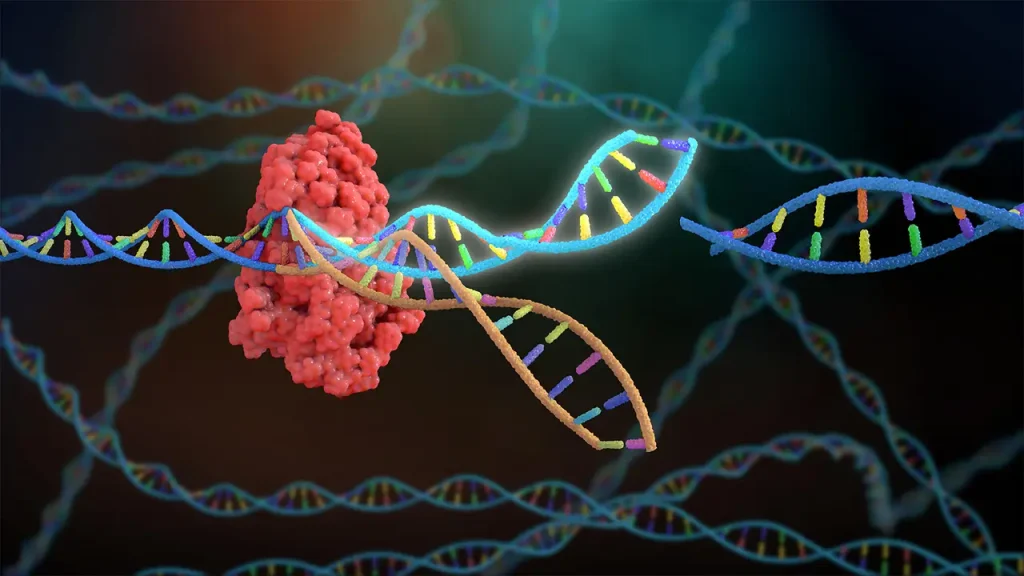SYLLABUS
GS-3: Awareness in the fields of IT, Space, Computers, robotics, nano-technology, bio-technology and issues relating to intellectual property rights
Context:
Union Minister of State (Independent Charge) for Science & Technology has launched India’s first indigenous CRISPR based gene therapy for Sickle Cell Disease.
More on the News
- India has launched its first indigenous CRISPR-based gene therapy for Sickle Cell Disease (SCD), named BIRSA 101, marking a milestone in the country’s biotechnology sector.
- The launch coincides with the 150th birth anniversary of tribal leader Birsa Munda, underscoring the therapy’s symbolic and social relevance to India’s tribal populations most affected by SCD.
- This initiative aligns with the National Sickle Cell Anaemia Elimination Mission (2023–2030), aiming for early screening, holistic management, and eventual eradication of the disease.
About the BIRSA 101
- BIRSA 101 uses CRISPR-Cas9 gene-editing technology to correct the defective beta-globin gene responsible for Sickle Cell Disease.
- The procedure involves collecting bone marrow stem cells from patients, editing the defective gene in a controlled lab environment, and reinfusing the corrected cells into the patient.
- Birsa-101 precisely corrects the disease-causing genetic mutation and is delivered as a one-time infusion, enabling the body to produce normal red blood cells instead of sickle-shaped ones.
Significance of the Technology
- Indigenous Innovation: India demonstrates strong scientific self-reliance in advanced biomedical research and precision medicine.
- Affordable Therapy: The therapy provides treatment at a fraction of global costs, helping democratize access to life-saving gene therapies.
- Biotech Strengthening: It strengthens the country’s biotech innovation ecosystem, supporting policies of the Department of Biotechnology and the Make-in-India framework.
- Healthcare Transformation: The gene-editing approach works like a “precise genetic surgery”, capable not only of curing Sickle Cell Disease but also transforming treatment pathways for several hereditary disorders.
- Equitable Public Health: It reinforces India’s commitment to equity in public health, aligning scientific progress with social justice by prioritizing underserved communities.
Challenges Associated with the Technology
- Skilled Expertise: Gene-editing therapies demand highly skilled expertise, specialized lab infrastructure, and stringent biosafety oversight.
- Ethical Concerns: Ethical considerations over germline editing, long-term genomic stability, and equitable access remain global concerns.
- Regulatory Evolution: Regulatory frameworks in India are still evolving; consistent oversight from agencies like the Genetic Engineering Appraisal Committee (GEAC) and the Indian Council of Medical Research (ICMR) is needed.
- Implementation Challenge: Ensuring affordability and scalability of CRISPR therapies beyond major research hospitals poses implementation challenges.
- Reactive Approach: Sustained public awareness and preclinical screening are vital to ensure early intervention and prevention rather than reactive treatment.
CRISPR (Clustered Regularly Interspaced Short Palindromic Repeats)
- CRISPR is a revolutionary gene-editing tool derived from bacterial immune defense systems that allows precise, targeted changes to DNA sequences.
- The Cas9 enzyme acts as molecular scissors, cutting the DNA at a desired location so genetic material can be added, removed, or altered.
- In the context of Sickle Cell Diseases, it corrects the mutated haemoglobin (HbS) gene responsible for deformed red blood cells that cause oxygen transport issues and organ damage.
- The technology is celebrated for being faster, cheaper, and more accurate compared to older gene-editing methods.
- CRISPR/Cas9 gene-editing tool was awarded 2020 Nobel Prize in Chemistry.
Sickle Cell Disease (SCD)
- Sickle Cell Disease is a genetic blood disorder where Red blood cells assume an abnormal crescent shape, leading to blockages, anaemia, pain episodes, and organ complications.
- It primarily affects India’s tribal populations, with over 20 million carriers and a significant number of affected children born each year.
- The disease exacerbates health inequities, as access to consistent treatment in tribal and rural regions remains limited.

